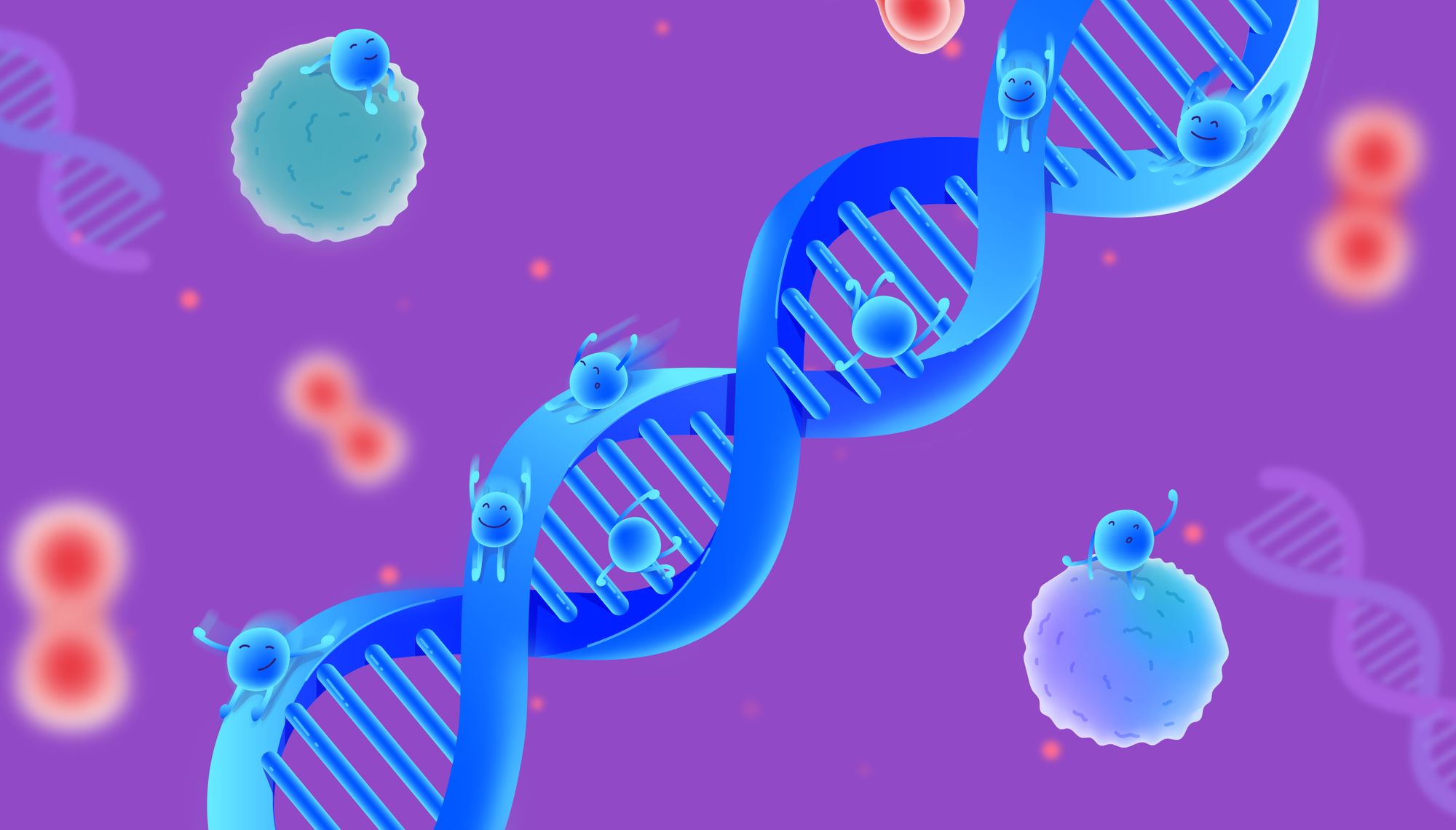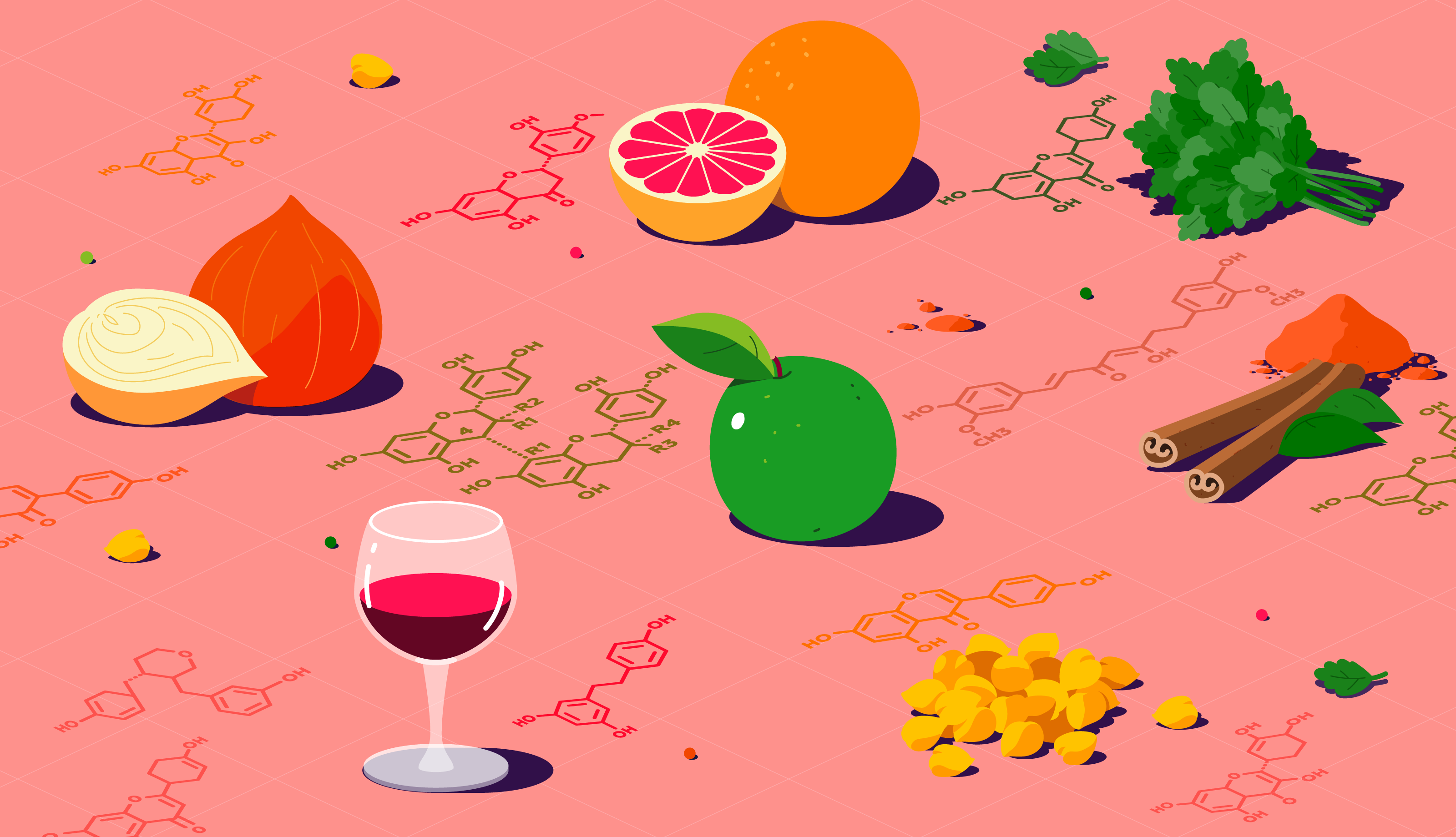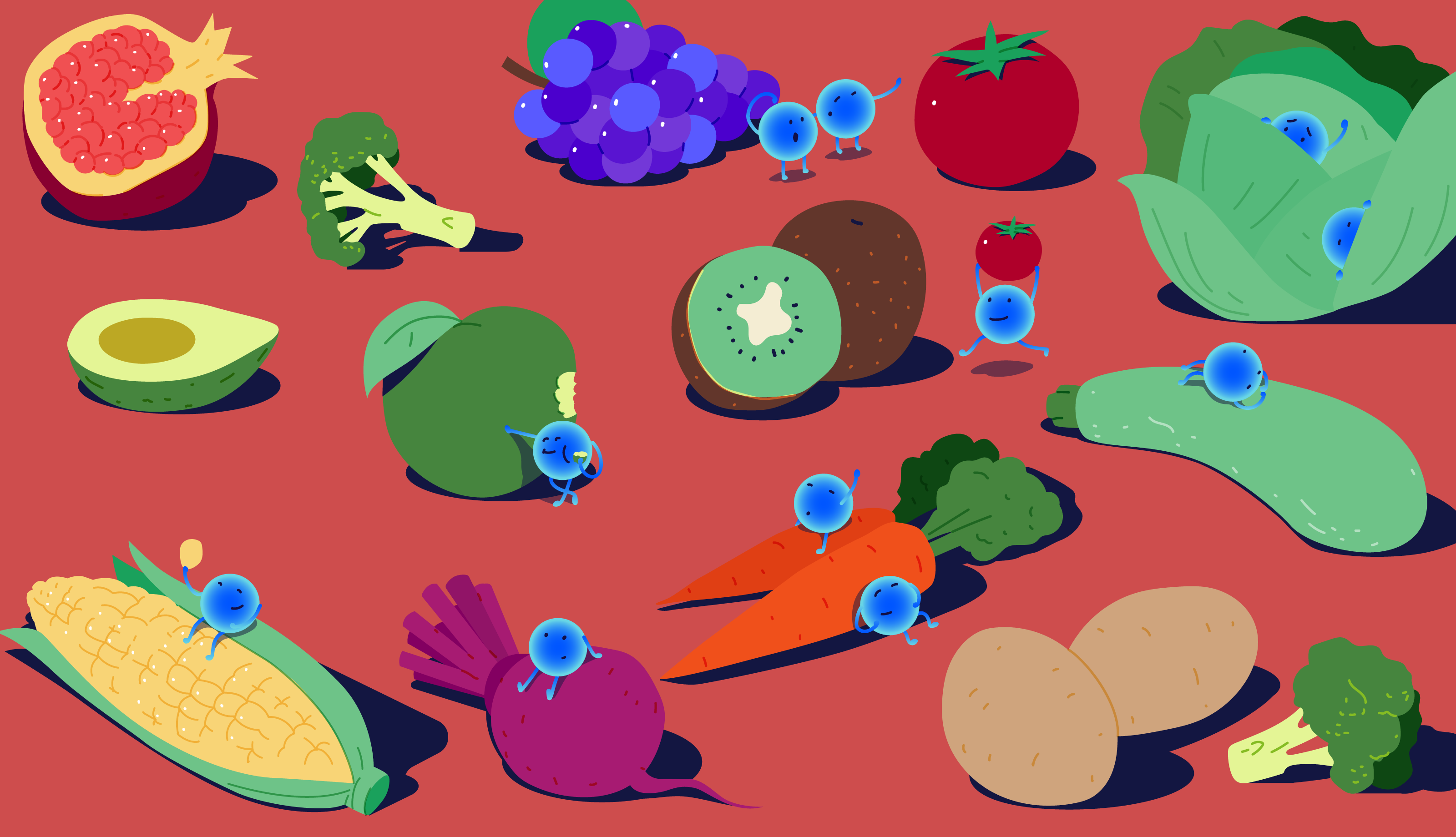These beneficial gut bacteria strengthen your gut lining, support microbiome health, and protect from disease.
First identified in 2004, Akkermansia muciniphila is a species of bacteria that helps to maintain our gut lining and possess many health benefits. You might not have heard of it before now, but A. muciniphila is mighty important.
In this article
- What is Akkermansia muciniphila?
- A. muciniphila and gut health
- Protection from obesity and diabetes
- Foods that increase Akkermansia levels
- These gut bacteria love fish oil
This bacteria lives in harmony with you. While it may benefit from living in your gut, you will also benefit from its abundance. Whilst living in your colon, it strengthens your gut barrier. And if that wasn’t enough, it also helps to keep your immune system in check.
Your large intestine is home to thousands of species of bacteria. All of them have different roles to help your body function and protect you from disease. We’re going to zoom in on the role of A. muciniphila in your gut and how it protects you from the disease.
What is Akkermansia muciniphila?
This bacterium thrives on the mucus layer of your gut lining, making it pretty self-sufficient and at the same time, it keeps you healthy.
A. muciniphila belongs to the phylum (a classification of bacteria) Verrucomicrobia. In fact, it is the only type of this particular phylum found in human fecal samples. In healthy individuals, its abundance is high, accounting for up to 4% of your intestinal bacteria.
The presence of this bacteria is associated with healthy individuals. In certain disease states, like irritable bowel disease and obesity, A. muciniphila is less abundant.
☝️FACT☝️ Prediabetics and type II diabetics tend to have significantly lower levels of A. muciniphila compared to healthy people.
How it works
So, how does this all tie together? To find out why A. muciniphila is less abundant in certain disease states, we need to look at what they do in the gut.
The intestinal lining is made up of epithelial cells covered in a layer of mucus. Its main function is to allow useful substances to enter the body and stop opportunistic microbes (and their metabolites) from getting in and potentially making you ill.
The mucus layer is rich in a protein called mucin that creates a gel coating. It is not only found in the large intestine, but in other places, like the lining of the lungs and in bodily fluids like saliva.
A. muciniphila love mucin because it uses it for energy. The clue is in the name: Akkermansia from the microbial ecologist Antoon DL Akkermans, and muciniphila meaning preferring mucin.
Unlike many other microbes in your gut, A. muciniphila doesn’t rely on you to feed it. This gives it a slight ecological advantage. Instead, by using your mucin reserves, the bacteria can thrive even if there are no nutrients in the gut. So, even if you’re fasting, the A. muciniphila can still function.
And you’re probably wondering how it got into your gut in the first place? Well, it probably came from your mother since A. muciniphila is found in low concentrations in human breast milk. Don’t worry if you were formula-fed, it’s in there, too!
A. muciniphila for gut health
By munching on your gut mucins, Akkermansia produce nutrients that support other beneficial bacteria in our gut microbiome.
The relationship between you and the A. muciniphila residing in your gut is symbiotic. This is because by eating the mucins in your gut barrier, they encourage cells to make more, which not only strengthens it, but also helps to modulate the immune system.
Akkermansia breaks down mucins and turns them into short-chain fatty acids (SCFAs), including acetate. Acetate is used by other beneficial bacteria like Firmicutes to make butyrate, a vital energy source for the cells lining your gut.
Your gut lining is a complex filter that's strengthened by A. muciniphila
For example, acetate feeds other bacterial species such as Faecalibacterium prausnitzii, a member of the Firmicutes phylum. When bacteria like A. muciniphila produce SCFAs that nourish other microbes, scientists call this cross feeding.
Your intestinal mucus layer is an important boundary between you and microbes (both good and bad). Therefore, if the mucus layer is disturbed in any way, it can lead to inflammation and increases the risk of infection.
A. muciniphila abundance is reduced in individuals with irritable bowel disease (IBD), as well as other chronic diseases like obesity and type II diabetes. Although not much is known about how the bacteria is involved, its ability to regulate the thickness of intestinal mucus is key.
Warriors against metabolic disease
Lower levels of A. muciniphila are present in individuals who have metabolic disorders like obesity or type 2 diabetes mellitus.
Your gut has a major role in the balance between health and disease. Metabolic disease is no exception. In fact, altered gut microbiota, inflammation, and disruption to the gut barrier are all associated with the development of obesity and diabetes type II.
Obesity
Akkermansia is more abundant in lean individuals. In overweight individuals, there is a lower abundance of the bacteria. Yet, the role of Akkermansia in metabolic disease is still relatively unknown.
However, there are many studies which have studied its abundance in both healthy individuals and those with metabolic disease. As a result, it may have a role in preventing and treating disease.
Because chronic diseases like obesity and type II diabetes are linked with a low abundance of A. muciniphila, its role in gut barrier could be important.
Akkermansia are pescatarians, they like plant foods and fish oil
For example, increased gut permeability is a characteristic of obesity, and this increase is associated with a reduced mucus thickness. However, A. muciniphila can restore the mucus layer and improve gut barrier function.
It can do this through prebiotic feeding. For example, by eating certain dietary fibers, the abundance of the friendly bacteria can be increased because the products produced when the fiber is broken down keeps them nourished. And, an increase in Akkermansia will thicken and strengthen the gut lining.
For example, a study using obese and prediabetic mice showed their A. muciniphila could be brought back to normal when they were fed prebiotics. It also reduced metabolic endotoxemia (a fancy term for when your gut microbiome can’t protect your body from absorbing toxins when you eat, a factor involved in the development of obesity).
And, remember we mentioned earlier that A. muciniphila produces SCFAs like acetate by breaking down mucin? Well, this may positively affect our weight, too. Acetate can stop us from feeling hungry, preventing weight gain.
So, by eating the mucins in your gut lining and turning them into helpful substances, A. muciniphila thickens your mucus lining and improves your gut barrier function. In turn, this helps to prevent food from being absorbed by the body and causing weight gain.
Type II diabetes mellitus
A. muciniphila is more abundant in people with normal glucose tolerance than those who are prediabetic or have diabetes type II.
In fact, these bacteria have been shown to enhance the effects of the antidiabetic drug called Metformin. In mice fed a high-fat diet, treatment with metformin increased the number of A. muciniphila and improved their blood sugar levels.
Equally, mice fed a high-fat diet who were given A. muciniphila orally but no metformin, also had an improved tolerance to glucose. So, this bacterium, through the modification of the gut microbiota, could help to find new ways to control type 2 diabetes in the future.
But how does it work? Well, when A. muciniphila produces SCFAs from the break down of mucin, these are used to supply goblet cells with energy. Goblet cells are the ones responsible for secreting mucins. So more energy means more mucin is produced.
All in all, it means that A. muciniphila has an antidiabetic function, as well as an antiinflammatory effect. It’s ability to thicken the intestinal mucus layer is key to its function of protecting your body from chronic disease.
Foods that increase Akkermansia levels
Polyphenols are colourful rainbows. They look good, taste good, and can boost your Akkermansia abundance
As well as having anti-inflammatory properties, polyphenols are great antioxidants and can prevent many diseases. What’s more, these micronutrients also increase the abundance of A. muciniphila in your gut.
Your intestinal barrier allows all the good things, like nutrients, water, and electrolytes, to travel to the parts of your body which require them. And, it stops harmful bacteria from invading your body and making you sick.
A. muciniphila is key because it can increase the thickness of the mucus lining in your gut, thereby increasing its barrier function. Not only that, but certain polyphenols can prevent diet-induced obesity too.
What to eat for Akkermansia muciniphila
| flaxseeds | bamboo shoots | grapes |
| black tea | fish oil | cranberries |
Cranberry extract, for example, is rich in polyphenols and can prevent weight gain as well as improve the symptoms of metabolic syndrome in mice. It also increases the abundance of Akkermansia, proving polyphenols have a prebiotic effect on the bacteria.
The polyphenols in grapes also exhibit the same effects on the bacteria and improve metabolic status. Both contain a particular class of polyphenol, called proanthocyanidins, and it's these which are believed to have a role in the prebiotic activity.
Proanthocyanidins are involved in increasing the numbers of goblet cells (the ones which secrete mucins). These cells help to produce mucin containing mucus which A. muciniphila need to thrive. So, adding them to the diet can improve the abundance of bacteria in your gut.
What this means is beneficial bacteria like A. muciniphila could contribute to the antioxidant effects that polyphenols have become known for. So, targeting the bacteria in the gut could increase the beneficial function of the polyphenols you eat.
You can increase the abundance of A. muciniphila in your gut by eating polyphenol-rich foods. Yes, it’s that easy, and no, you don’t have to eat live versions of the bacteria. In fact, eating live strains this bacterium in humans is still being investigated for its safety, but who knows, one day it may make it onto a food label!
But for now, you can improve your levels of the naturally occurring bacteria in your gut through your diet. There are many classes of polyphenols, all of which have their own health beneficial qualities.
A. muciniphila and dietary fats
Some dietary fats are linked to inflammation and disease, while others are known to promote beneficial bacteria.
Diets high in saturated fats are linked with higher incidences of inflammation. Whereas, diets high in polyunsaturated fatty acids, like those found in flaxseeds and fish oils, have been shown to counteract inflammation, and are associated with leaner individuals.
These dietary fats can also affect the levels of A. muciniphila in your gut. In one study, mice were fed different diets made up of different fats. One group was fed lard, and the other was given fish oil for eleven weeks, and the results are interesting.
In the fish oil fed group, the abundance of A. muciniphila increased, so too did their abundance of Lactobacillus. The opposite happened in the lard fed mice. Fecal material from both groups was then transplanted into a new group of mice.
In the mice who received the fecal transplants from fish oil fed mice, their A. muciniphila levels were increased and they had reduced levels of inflammation. Whereas, the mice who received the transplant from the lard fed mice had high levels of inflammation.
So, the type of dietary fat you consume can also greatly impact on the abundance of A. muciniphila in your gut. More than that, eating the wrong types of fat may be linked to increased levels of gut inflammation.
Remember this
A. muciniphila is a recent discovery, but still a pretty cool bacterium with massive potential. It’s found throughout your gastrointestinal tract, particularly in the large intestine. It’s associated with lean individuals, and for that reason is believed to have roles in preventing the development of metabolic disease.
And, unlike some other types of bacteria in your gut, it thrives on the mucins present in the mucus layer of your gut lining. So, it can survive even if you’re fasting. When it breaks down mucin, SCFAs are released which can be used by its bacteria neighbours for energy.
Right now you won’t find live cultures of Akkermansia muciniphila in food sources, but you can enhance the abundance in your gut by eating polyphenol-rich foods, like fruit and vegetables.
Polyphenols are also thought to have a key role in the anti-obese and antidiabetic effects of Akkermansia muciniphila too. The moral of the story? Eat more fiber and cram in the polyphenols to keep your body in tip-top condition.
- Anhê, F. F et al. (2016). Triggering Akkermansia with dietary polyphenols: A new weapon to combat the metabolic syndrome?. Gut microbes, 7(2), 146–153.
- Belzer, C et al. (2017). Microbial Metabolic Networks at the Mucus Layer Lead to Diet-Independent Butyrate and Vitamin B12 Production By Intestinal Symbionts. American Society for Microbiology: 8(5).
- Caesar, R et al. (2015). Crosstalk Between Gut Microbiota and Dietary Lipids Aggravates WAT Inflammation Through TLR Signalling. Cell Metab: 22(4), pp 658-668.
- Dao, M, C et al. (2015). Akkermansia muciniphila and Improved Metabolic Health During a Dietary Intervention in Obesity: Relationship with Gut Microbiome Richness and Ecology. Gut.
- de Vos, W, M. (2017). Microbe Profile: Akkermansia muciniphila: A Conserved Intestinal Symbiont that Acts as The Gatekeeper of our Mucosa. Microbiology: 163(5).
- Derrien, M et al. (2017). Akkermansia muciniphila and its Role in Regulating Host Functions. Microbial Pathogenesis: 106, pp 171-181.
- [Everard, A et al. (2013). Cross-Talk Between Akkermansia muciniphila and intestinal Epithelium Controls Diet-Induced Obesity. PNAS: 110(22), pp 9066-9071.
- Geerlings, S, Y et al. (2018). Akkermansia muciniphila in the Human Gastrointestinal Tract: When, Where, and How? Microorganisms: 6(3).
- Krishnan, A. (2016). Akkermansia muciniphila: What You Need to Know About this Bacterium. uBiome.
- Naito, Y et al. (2018). A Next-Generation Beneficial Microbe: Akkermansia muciniphila. J. Clin. Biochem. Nutr: 63(1), pp 33-35.
- Ottman, N et al. (2017). Pili-Like Proteins of Akkermansia muciniphila Modulate Host Immune Responses and Gut Barrier Function. PLOS One.
- Pierre, J, F et al (2015). Cranberry Proanthocynaidins Improve the Gut Mucous Layer Morpohology and Function in Mice Receiving Elemental Enteral Nutrition. JPEN J Parenter Enteral Nutr: 37(3), pp 401-409.
- Shin, N, R et al. (2013). An Increase in the Akkermansia spp. Population Induced by Metformin Treatment Improves Glucose Homeostasis in Diet-Induced Obese Mice. Gut: 63, pp 706-707.
- Zhang, T et al. (2019). Akkermansia muciniphila is a promising probiotic. Microbial Biotechnology.























